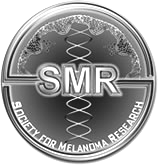Skin Cancer Prevention
Sun Damage or Skin Lesions should not be ignored
Protect You & Your Family From Sunspots and Skin Cancer by taking the following precautions:
Everyday, use broad spectrum sunscreens with a SPF of 30+ or higher that block both UVA and UVB rays
When in the sun, reapply sunscreen every two hours or immediately after swimming or excessive sweating
Cover Up with clothing that covers your skin, such as long pants, collared shirts and long sleeves
Choose lightweight, closely woven fabrics and choose clothing labelled with a UV protection factor of 50+
Wear a broad-brimmed hat
Wear UV-blocking wraparound sunglasses
Protect your children from the sun in the same way
Keep newborns out of the sun. Sunscreens should be used on babies over the age of six months
Avoid sunburn by minimising sun exposure when UV Alert exceeds 3
Avoid the sun especially between 10AM and 3PM when UV levels are the most intense, and use shade whenever possible
Do not use sunlamps, tanning booths or sunbeds
Examine your skin head-to-toe every month. If you see anything changing uniquely that persists for 2 to 3 weeks then book an appointment with us without delay
Skin Cancer History
Previous skin cancer diagnosis increases a patient’s chance of another by a factor of 10, especially in the same skin area or nearby. That is usually because the skin has already suffered irreversible sun damage.
Thus, it is crucial to pay particular attention to any previously treated site, and any changes brought to the attention of the Bondi Junction Skin Cancer Clinic without delay.
Even if no suspicious signs are noticed, more frequent follow-up visits including total-body skin examinations are an essential part of post-treatment care.
EVERYONE benefitS from Regular Skin Checks
This should include checking areas that are normally hidden from the sun, because skin cancer can develop anywhere on the body.
Show the Team at Bondi Junction Skin Cancer Clinic anything you find that is new or different on your skin, especially if it is changing uniquely in any way for more than 2 to 3 weeks.










